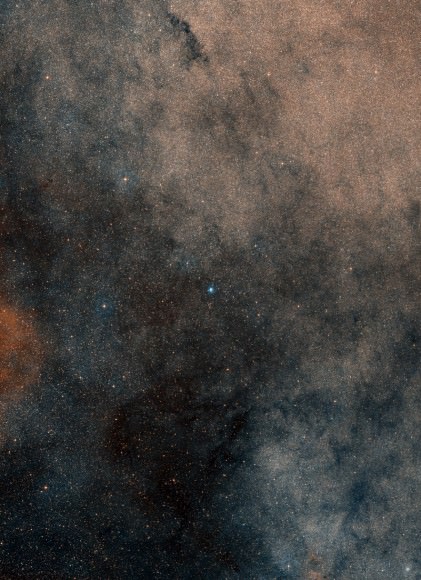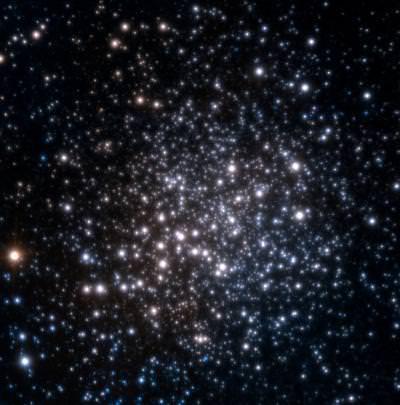[/caption]
Like archaeologists who dig through the layers of dirt to unearth crucial pieces of the history of mankind, astronomers have been gazing through the thick layers of interstellar dust obscuring the central bulge of the Milky Way and have unveiled an extraordinary cosmic relic. Within the bulge is an unusual mix of stars in the stellar grouping known as Terzan 5, and such a mix has never been observed anywhere in the bulge before. This peculiar conglomeration of stars suggests that Terzan 5 is one of the bulge’s primordial building blocks, most likely the relic of a dwarf galaxy that merged with the Milky Way during its very early days.
The new observations of Terzan 5 show that this object, unlike all but a few exceptional globular clusters, does not harbor stars which are all born at the same time — what astronomers call a “single population” of stars. Instead, the multitude of glowing stars in Terzan 5 formed in at least two different epochs, the earliest probably some 12 billion years ago and then again 6 billion years ago.

“Only one globular cluster with such a complex history of star formation has been observed in the halo of the Milky Way: Omega Centauri,” says team member Emanuele Dalessandro. “This is the first time we see this in the bulge.”
Using ESO’s Very Large Telescope, equipped with the Multi-conjugate Adaptive Optics Demonstrator (MAD), the astronomers were able to “disperse the fog” of the dust clouds in the central bulge to reveal the myriad of stars.
Through the sharp eye of the VLT, the astronomers also found that Terzan 5 is more massive than previously thought: along with the complex composition and troubled star formation history of the system, this suggests that it might be the surviving remnant of a disrupted dwarf galaxy, which merged with the Milky Way during its very early stages and thus contributed to form the galactic bulge.
The team hopes this is only the first in a series of discoveries on the origin of bulges in galaxies.
“The history of the Milky Way is encoded in its oldest fragments, globular clusters and other systems of stars that have witnessed the entire evolution of our galaxy,” says Francesco Ferraro, lead author of a paper appearing in this week’s issue of the journal Nature. “Our new study opens a new window on yet another piece of our galactic past.”
Source: ESO


Sounds like a close re-examination of highly obscured or poorly studied globular clusters in our galaxy may turn up a few other systems like Terzan 5 and Omega Centauri.
In the supplementary part of the accompanying paper (see the ESO link) the authors mention that Terzan 5 is known to contain an unusually high number of millisecond pulsars (MSPs). They posit that “if this cluster is the relic of a more massive structure, the deeper potential well of the original system could have favoured the retention of a larger number of (supernova kicked) neutron stars.” If this scenario pans out, clusters with high numbers of MSPs would seem like good choices to look for multiple epochs of star formation.